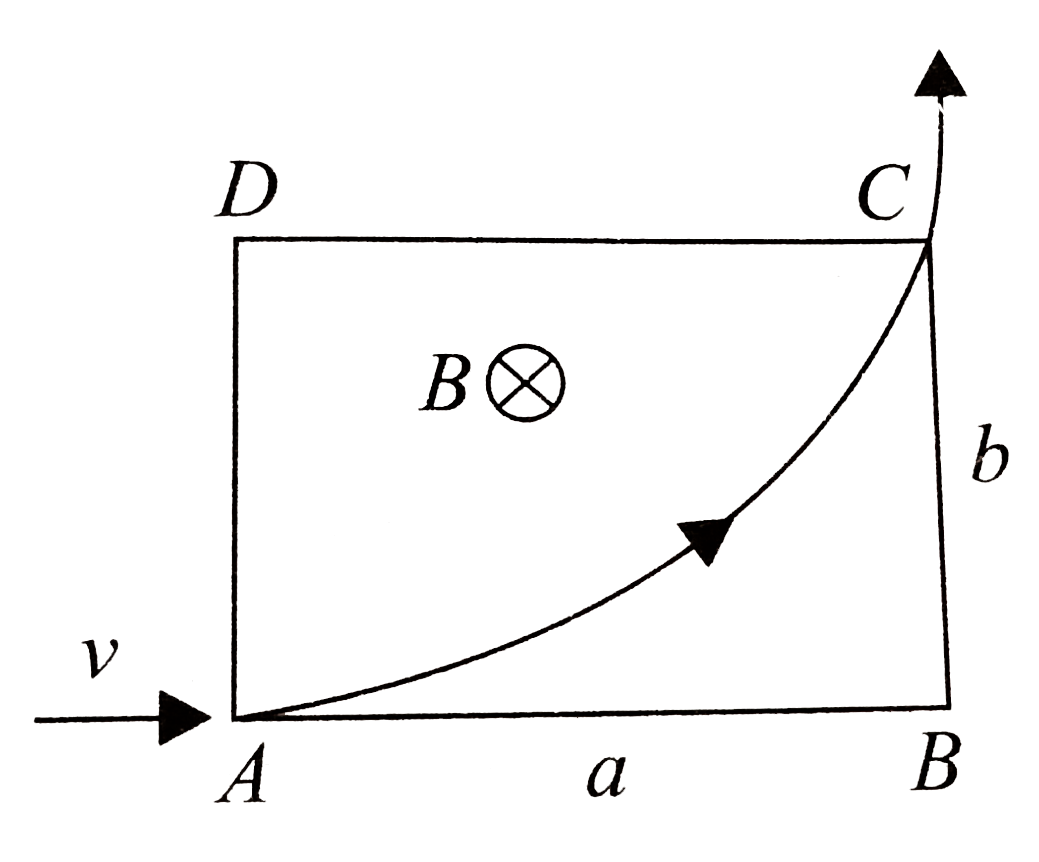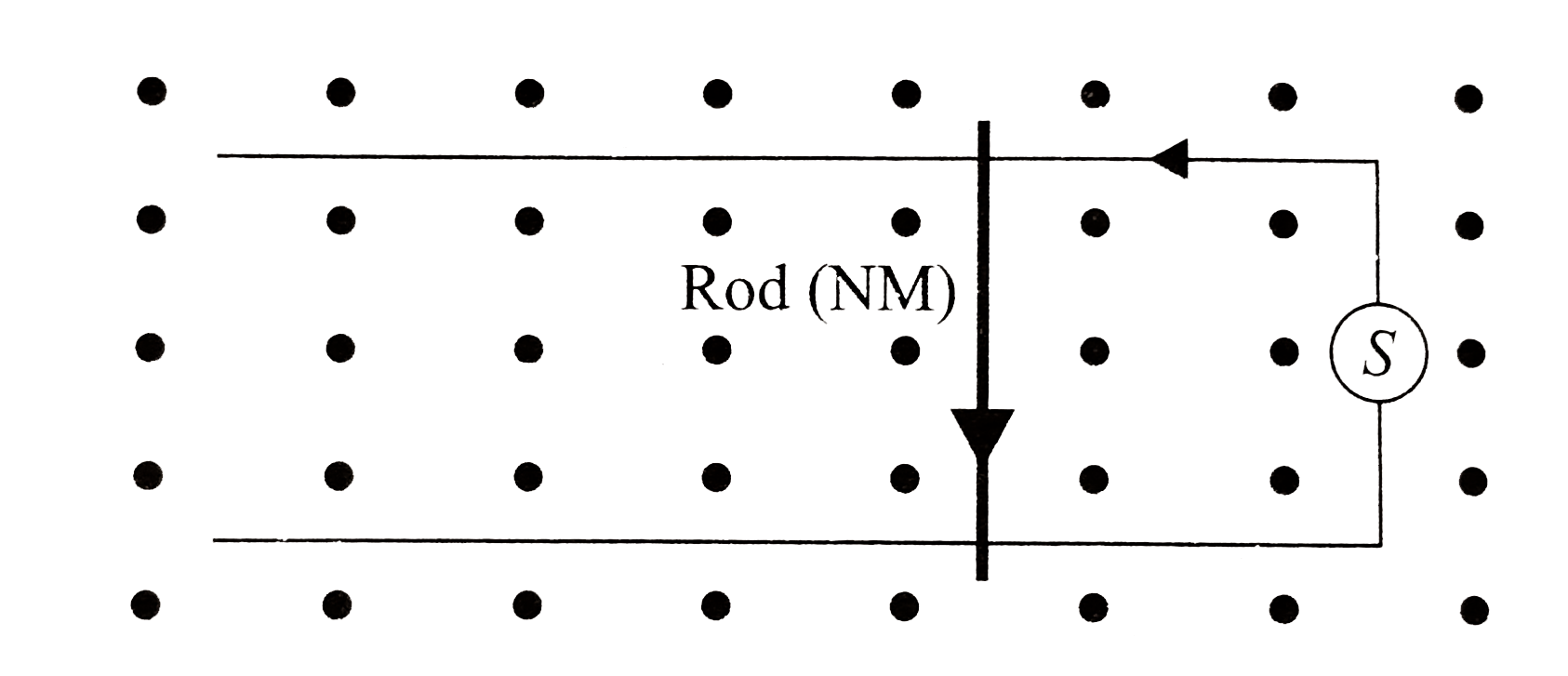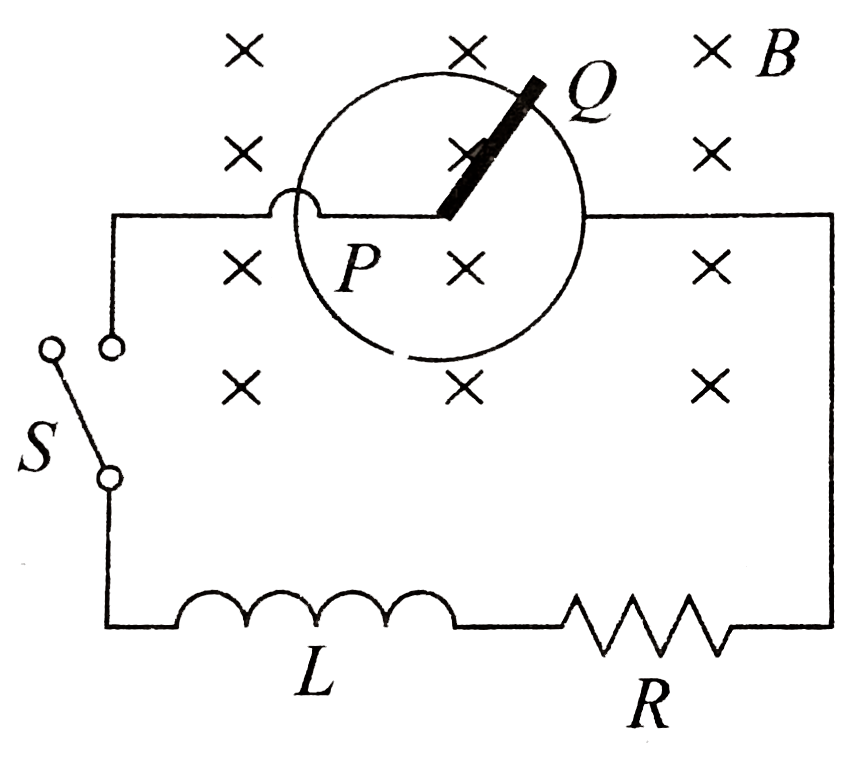Integer from CENGAGE PHYSICS (ENGLISH) Chapter 18 MISCELLANEOUS VOLUME 5 for Class 12
| Class 12 | PHYSICS |
| Chapter | MISCELLANEOUS VOLUME 5 |
| CENGAGE PHYSICS (ENGLISH) | Integer |
| Medium | English |
| Academic Year | 2023-2024 |
Question 1
A charged particle enters a uniform magnetic field with velocity v0=4m/s perpendicular to it, the length of magnetic field is x=(√32)R, where R is the radius of the circular path of the particle in the field. Find the magnitude of charge in velocity (in m/s) of the particle when it comes out of the field.View SolutionQuestion 2
A charged particle of mass m = 1 mg and charge q=1(μ)C enter along AB at point A in a uniform magnetic field B = 1.2 T existing in the rectangular region of size a×b, where a = 4 m and b = 3 m. The particle leaves the region exactly at corner point C. What is the speed v(∈ms−1) of the particle?
 View Solution
View SolutionQuestion 4
A conducting rod of mass 200 gm and length 10 cm can slide without friction on two long, horizontal rails. A uniform magnetic field of magnitude 5 m T exists in the region as shown. A source S is used to maintain a constant current 2 A through the rod. If motion of the rod starts from the rest, find its speed (in cm/s) after 10 s from the start of the motion
 View Solution
View SolutionQuestion 5
An infinitely long conductor PQR is bent to form a right angle as shown. A current I flows through PQR. The magnetic field due to this current at the point MisB1. Now, another infinitely long straight conductor QS is connected at Q so that the current is I/2 in QR as well as in QS, the current in PQ remaining unchanged. The magnetic field at M is now B2=4mT. Find the value of B1(inmT).
 View Solution
View SolutionQuestion 6
A magnetic field →B=−B0ˆi exists within a sphere of radius R=v0T√3 where T is the time period of one revolution of a charged particle starting its motion form origin and moving with a velocity vce(v)0=v02√3ˆi−v02ˆj. Find the number of turns that the particle will take to come out of the magnetic field. View SolutionQuestion 11
The diagram shows a circuit having a coil of resistance R=2.5(Ω) and inductance L connected to a conducting rod PQ which can slide on perfectly conducting circular ring of radius 10 cm with its centre at 'P'. Assume that friction and gravity are absent and a constant uniform magnetic field of 5 T exist as shown in Fig.

At t = 0, the circuit is switched on and simultaneously a time varying external torque is applied on the rod so that it rotates about P with a constant angular velocity 40rad/s. Find magnitude of this torque (in milli Nm) when current reaches half of its maximum value. Neglect the self-inductance of the loop formed by the circuit.View Solution


